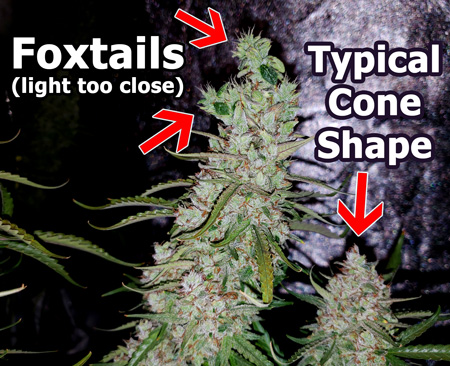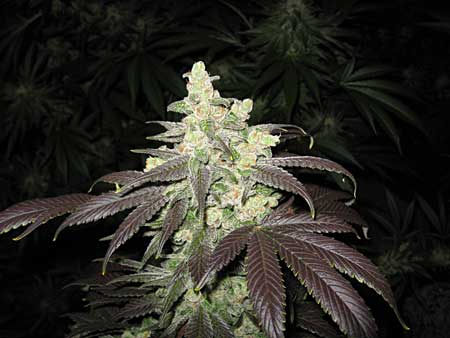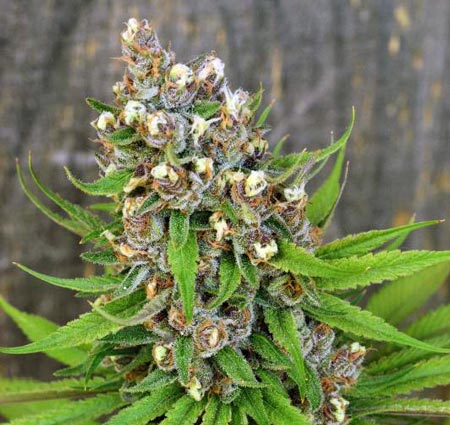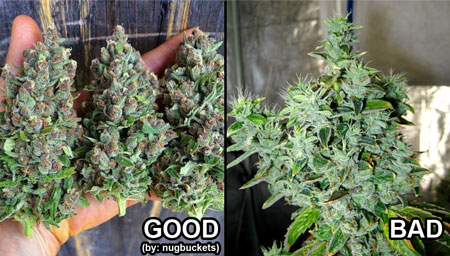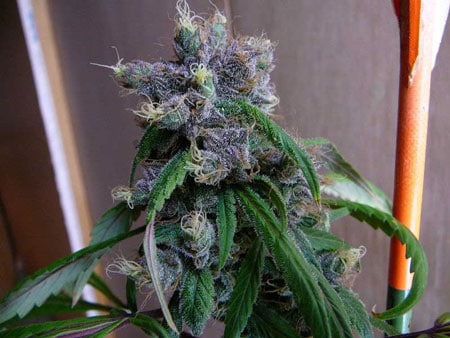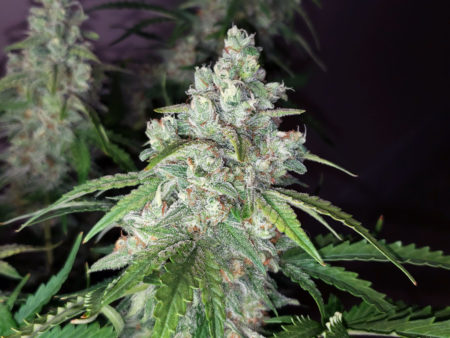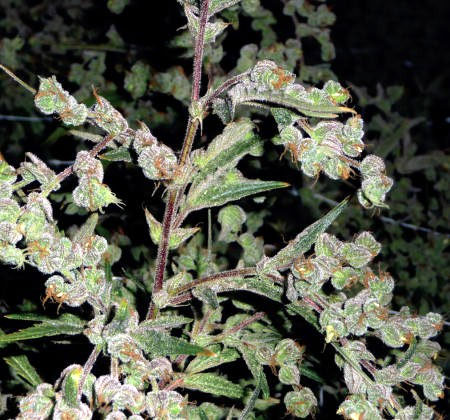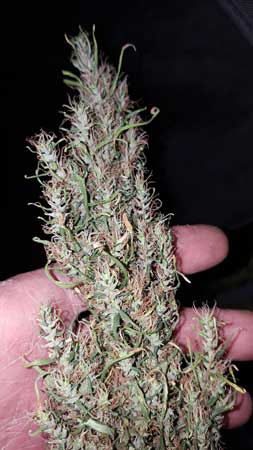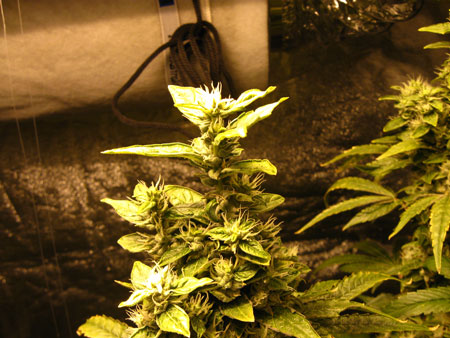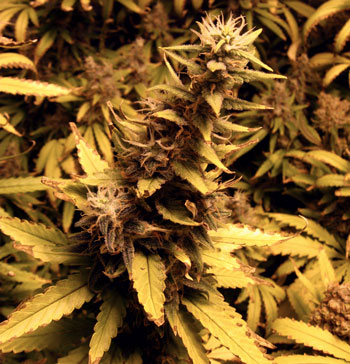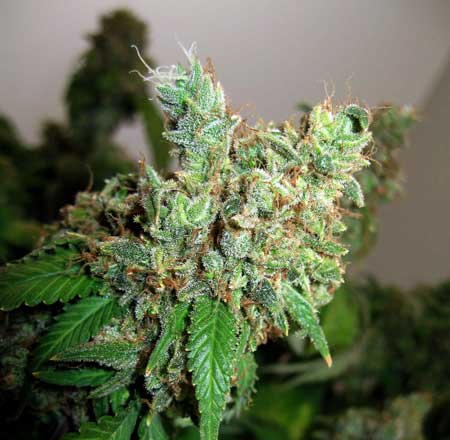by Sirius Fourside
What to Do About Marijuana Foxtailing
Picture some dried and cured, ready-to-smoke cannabis bud in your mind. Maybe it’s some weed you’ve harvested yourself, maybe it’s some exotic-looking unique strain, or maybe it’s just a generic picture your mind pulls up when you think ‘weed’.
I’m sure there are a few exceptions, but I’m betting most of you didn’t automatically picture this:
Picture of a cannabis bud with a major “foxtail” coming out the top.
This “foxtail” was caused by too much heat, though some cannabis foxtails are the result of genetics. Today’s foxtailing tutorial will teach you how to spot the difference.
There are new green foxtails near the top where the bud is too close to the grow light. On the right is a bud with a typical cone shape. The lower bud is growing normally because it’s far enough away from the grow light to be unstressed.
Auto-trimming machines cut off foxtails and many sellers trim them off manually. That means if you purchase cannabis regularly you may have bought buds that had foxtails without knowing. That’s not necessarily a bad thing, though.
See examples of “good” vs “bad” marijuana foxtailing below!
So, What Exactly Are Foxtails?
The bud we know and love is made up of a bunch of calyces (that’s the plural for “calyx”) and each calyx is a potential home for a seed. However, those seeds will only develop in cases where pollination from a male plant or hermaphrodite (developing both male and female sex organs) occurs.
Buds are made up of many calyxes stacked on top of each other, but generally, buds grow evenly and stick together in rounded bunches.
As female cannabis plants mature and soak up light, they grow calyces in groups that pile up on each other until they end up looking something like a rounded bunch. Even the more exotic-looking strains tend to form buds with a somewhat even-ish surface.
When you do see the individual calyces, in a normal bud they’ll tend to be evenly spaced without any part sticking out much further than the others.
So, is foxtailing a bad thing? It depends…
I know, I know… no one likes an ‘it depends’ answer. A ‘yes’ or ‘no’ would be a definitive answer and it feels so nice to feel like you know something for sure. Luckily for us as growers, you can learn to tell if the foxtailing you’re seeing is good or bad in just a few minutes. Now you can impress your friends.
The Two Types of Foxtailing
(Good vs Bad)
Before we go any further, I have to admit that designating one type of foxtailing ‘good’ is a bit misleading. I call it ‘good’ in that it doesn’t provide any positive or negative benefits; ‘good’ foxtailing looks a bit funky but ultimately, it’s purely a cosmetic issue. However, ‘bad foxtailing’ really is a bad thing and comes with consequences…
Being able to tell if the foxtailing you’re experiencing is good or bad is as simple as being able to tell the difference between two foxtailing pictures. Here are two more examples side-by-side:
Let’s start with the one on the left. This type of foxtailing is caused by…
Genetics
Some strains of cannabis have been bred – by humans and/or mother nature – to form buds where foxtailing is the norm. Although often foxtailing is caused by heat or light stress, when you’re growing a strain that is genetically predisposed to foxtail, the whole bud joins in on the foxtailing action. This makes it so that genetic foxtailing looks more uniform than the other type of foxtailing we’ll review in a minute.
Here’s an example of normal calyces that look a bit like foxtails. It’s natural for some strains to clearly see each individual calyx, but they tend to be relatively symmetrical with a similar amount of “foxtailing” on all sides. (Why are these buds pink and purple?)
Another example of a strain that naturally makes foxtails in normal conditions
The picture below is a strain called ‘Dr. Grinspoon’ (named for the esteemed cannabis activist, Dr. Lester Grinspoon). The look of this plant could be considered another manifestation of genetic foxtailing, and it’s important to note that this action happens everywhere on the plant.
This is a landrace Sativa strain (typically you’ll never see one of these strains, they’re often only found in remote places with outdoor growers). If every single bud grows like this from top to bottom, that means the bud structure is caused by genetics, not stress.
Good or Bad? In short, there’s nothing wrong with genetic foxtailing. The fact that it’s genetic means that it was going to do it regardless of whatever specific growing technique is being used. These strains are capable of containing high amounts of THC if they’re bred that way.
This type of foxtailing is the good type. Again, that only means that it’s good by comparison to bad foxtailing in that it doesn’t cause any negative effects.
Now for the other pictures. The other kind of foxtailing (the bad kind) is usually caused by…
Heat/Light Stress
The second cause of foxtailing is environmental and it’s usually caused by your lights being too close. If you’ve ever parked a high-powered HPS, LEC, CMH, or LED grow light (fluorescent lights like CFLs and T5s aren’t usually strong enough) too close to your cannabis, you might see buds grow these odd spires.
Foxtailing buds look a bit different from traditional buds because the calyces grow on top of each other to form spires like little skyscrapers on your buds.
These spires/towers throw off the overall shape of the bud so they look odd to most people
This tower growing off the side of this bud is located directly under the grow light
What about when buds keep growing new white pistils over and over? This is another version of foxtailing that is caused by heat and light stress. If it’s only happening to the parts of the plant closest to the light, that’s a sign that it’s being caused by stress instead of genetics.
A “fist” shaped bud is often experiencing heat or light stress from the grow light being too close
Good or Bad? Bad! This type of foxtailing is a sign that your buds are getting too much light and/or too much heat. These odd spires can also be accompanied by light bleaching and cooked leaves. Any one of these signs is a message that your lights need to be backed off immediately to halt any further damage. Although light bleaching and burned leaves are obviously damaged, foxtails don’t look damaged so much as they just look weird, so they don’t register as a threat to new growers. Unfortunately, they’re the harbingers of heat damage which means lost potency; if you see this type of foxtails on your buds, you’ve likely already lost potency to heat and now the mission is to lose as little as you possibly can.
Luckily, this type of foxtailing is usually localized, so you’ll only see it in spots where light intensity is super-high. This usually means they’ll be found in a small circle directly under the light, but that small circle gets larger as the light gets closer.
Now with all that being said, plants are weird! It’s totally possible that many of you growers have already seen a plant that makes the ‘bad’ looking foxtails but all over the plant. Or maybe a plant that only grows in spires. The point is that there are bound to be plants that break these rules, but at least until then, you’ll know what you’re dealing with. Good luck and happy growing.
Learn more about why some plants keep growing new pistils on top of their buds
Jump to…


